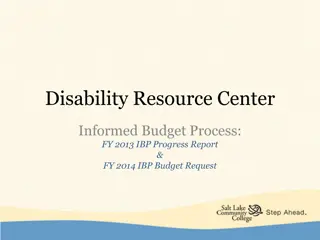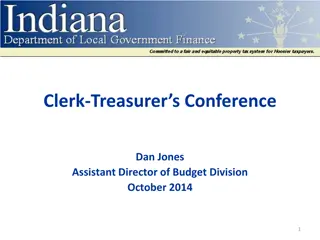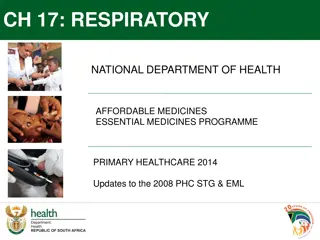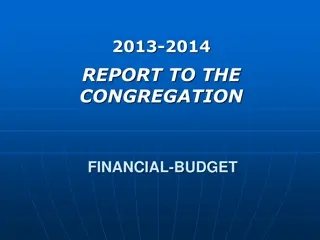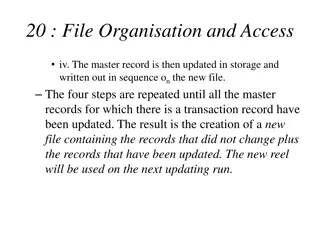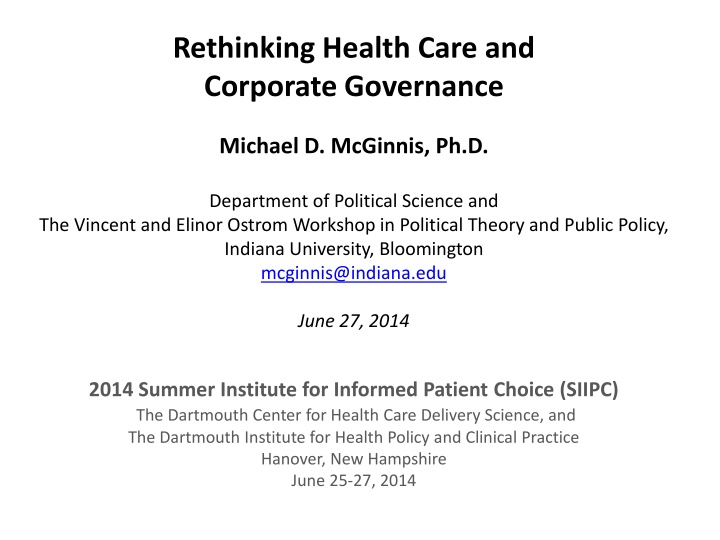
Rethinking Health Care Governance for Effective Policy Systems
Explore the intricate connections between health care governance, corporate governance, and policy systems in this insightful discussion by Michael D. McGinnis, Ph.D. Discover how regional variations, successful implementations, and sources of frustration impact the realm of health care governance. Learn about the importance of understanding policy systems and the role of leaders in the Health Commons according to the principles of Elinor Ostrom.
Uploaded on | 1 Views
Download Presentation

Please find below an Image/Link to download the presentation.
The content on the website is provided AS IS for your information and personal use only. It may not be sold, licensed, or shared on other websites without obtaining consent from the author. If you encounter any issues during the download, it is possible that the publisher has removed the file from their server.
You are allowed to download the files provided on this website for personal or commercial use, subject to the condition that they are used lawfully. All files are the property of their respective owners.
The content on the website is provided AS IS for your information and personal use only. It may not be sold, licensed, or shared on other websites without obtaining consent from the author.
E N D
Presentation Transcript
Rethinking Health Care and Corporate Governance Michael D. McGinnis, Ph.D. Department of Political Science and The Vincent and Elinor Ostrom Workshop in Political Theory and Public Policy, Indiana University, Bloomington mcginnis@indiana.edu June 27, 2014 2014 Summer Institute for Informed Patient Choice (SIIPC) The Dartmouth Center for Health Care Delivery Science, and The Dartmouth Institute for Health Policy and Clinical Practice Hanover, New Hampshire June 25-27, 2014
Rethinking Health Care Governance and Corporate Governance Michael D. McGinnis, Ph.D.
Health Care Governance Does it exist? Yes, but it involves more than just government Regional variation provides evidence that health care governance matters Implementing SDM, IDC would constitute a change in governance Success requires supportive changes in institutional context (professional education, practice, payment, organizations procedures, norms, social expectations) After lunch: Examples of successful implementation, at corporate or regional level Look for mutually reinforcing changes in laws, norms, procedures, expectations 3
Sources of Frustration Success stories often difficult to sustain or to scale up SDM in play since at least 1982 how much progress? David Goldhill s diagnosis: System dominated by wrong kind of customers And its dynamics undermine efforts like SDM Saying Let there be a market is not enough Efficient markets are embedded in broader institutional context 4
Understanding Policy Systems David Goldhill argues that health care is not so unique as a market I d say health care is not so unique as a policy system All policy systems are complex, and In U.S. all lack a central dominant decision point Goal of reform should be to shape process of improvement to realize great ideas of SDM, PCMH, ACOs, etc. Unusual in continuing importance of localism Potential basis for shared sense of stewardship 5
Elinor Ostrom and the Health Commons 2009 Nobel Prize in Economics for community- based management of resource commons An alternative to market vs. government control Polycentric governance Analogy is useful but not exact Coordination of multiple programs is needed A health commons needs leaders who both cooperate and achieve own corporate mission Engage patients in care and public in governance 6
Frustrations in Regional Stewardship 1932: Committee on Costs of Medical Care Proposals too radical, even for New Deal; AMA opposition 1946-1974: Hill-Burton Act (Hospital Survey and Construction Act) Distributive politics dominated planning processes, over-capacity 1960s-1980s: Neighborhood Health Centers, then Community Health Centers Lacked a powerful national constituency -- strong in some communities 1966: Comprehensive Health Planning Act Unfunded mandates, no enforcement authority, philanthropic paternalism 7
1974: HPRDA (Health Planning and Resource Development Act), established Health Systems Agencies Unfunded mandates, tokenism, unstable coalition/constituency 1970s-today: CON (Certificate of Need) requirements Mandated then left as voluntary, Mired in minutiae, regulatory capture 1970s-today: HMOs and other managed care organizations Public backlash against perception of excessive cost concerns 2010 - future: ACA may facilitate regional collaboration But already evidence of strategic response, as employers reduce health coverage and increased consolidation among health care providers, thereby removing influence of non-health care employers 8
Learning from Previous Efforts Unintended consequences are ubiquitous Not enough to be CMS Czar - see effects of ACA We should try to anticipate potentially adverse reactions to new regulations Build a process for improvement And build a more comprehensive campaign for transformation, With inter-connected roles for government regulators, provider organizations, professional associations, and the public Is this too much to expect? 9
Inspiration from Environmental Policy? Incredible improvement in environmental conditions in U.S. since 1970s How did we get from there to here? 1. Pollution as usual: minimal corporate responsibility 2. Polluter Pays: public and expert concern led to laws & regulations, setting a floor on acceptable practices and levels of pollution 3. Result: race-to-the-bottom as industries moved to poorer areas 4. Public expectations change: non-profit environmental groups shamed corporate violators, consumers began to value green products, 5. Corporate change: producers adopt and advertise greener processes, over-complying with regulations, some incorporate into policies and procedures, securing a larger market share and stronger brand loyalty 6. Communities facilitate local environmental programs, and began to market themselves as great places to live and work, 7. Result: race-to-the-top greening of industry and improved conditions 10
How Might This Look in Health Care? 1. Medical practice as usual 2. Regulators set floors on acceptable levels of quality control, essential benefits of health insurance (ACA), etc. Next step might be requiring SDM/IPC and more transparency. 3. Continue to see variation in utilization, cost, and health outcomes 4. Individual consumers demand better value (quality and fit to their values), and someone shares cost & performance measures 5. Corporate change: go beyond cost-savings efforts to over-comply by internalizing quality control and concern for patient engagement 6. Regional providers and community leaders collaborate, watched over by a public that expects results, with access to plenty of information 7. Health outcomes incorporated into community efforts to attract new jobs and workers a health care version of a race to the top 11
A Multi-Faceted Campaign for SDM/IPC Implementation Laws and Corporate Professional Regulations Strategy Activities Level of Patient engagement in care Some emphasize in mission and brand Higher standards IPC requirements Improved SDM protocols SDM programs Informed consent 12
What changes can help in this process? 1. Laws and regulations 2. Public expectations & access to information 3. Corporate strategies (2016?) 4. Community coordination 13
Take Away Points Health care governance exists It is NOT something THE GOVERNMENT does to us, It s is something we do to ourselves And that we re-enact and reinforce in our routine activities So, we can change it. 14




